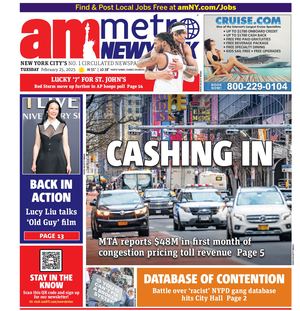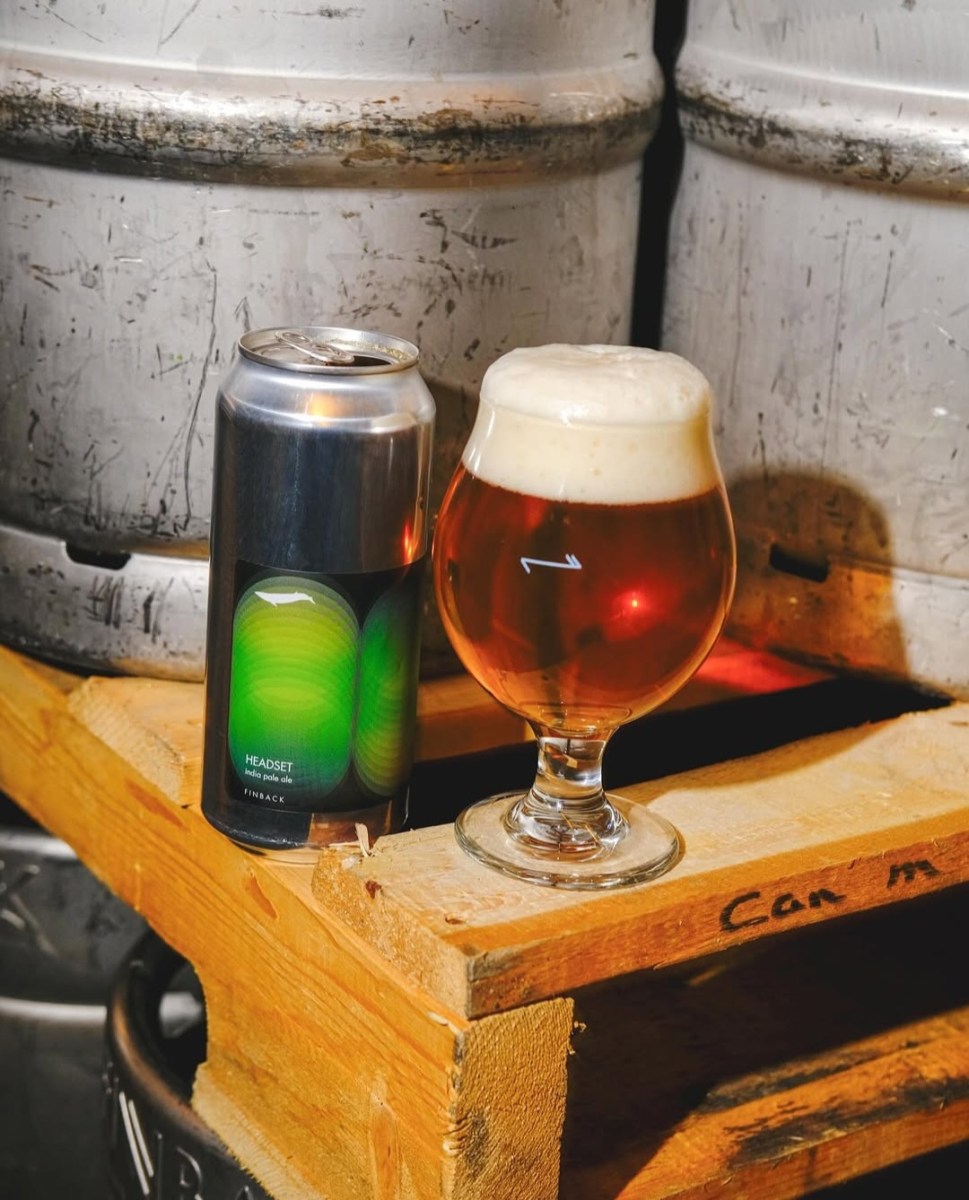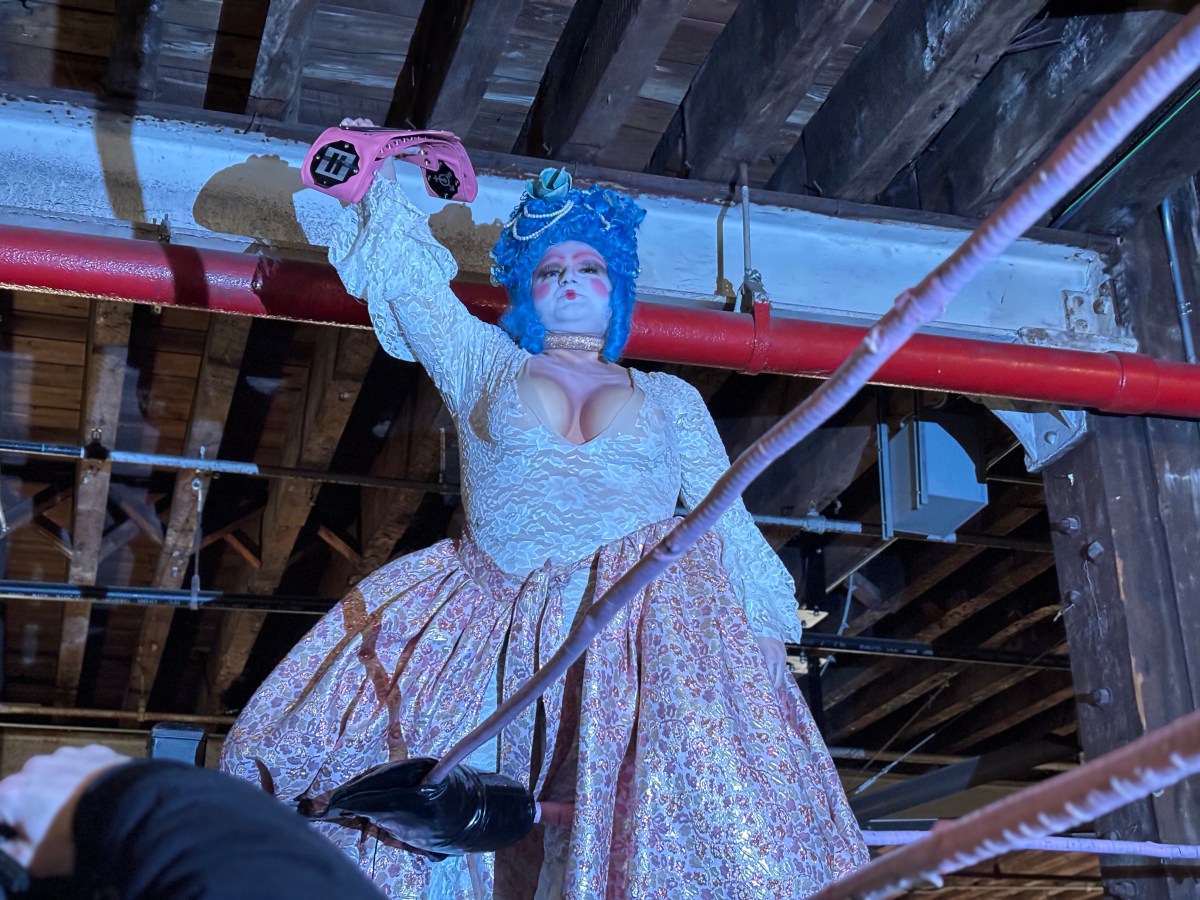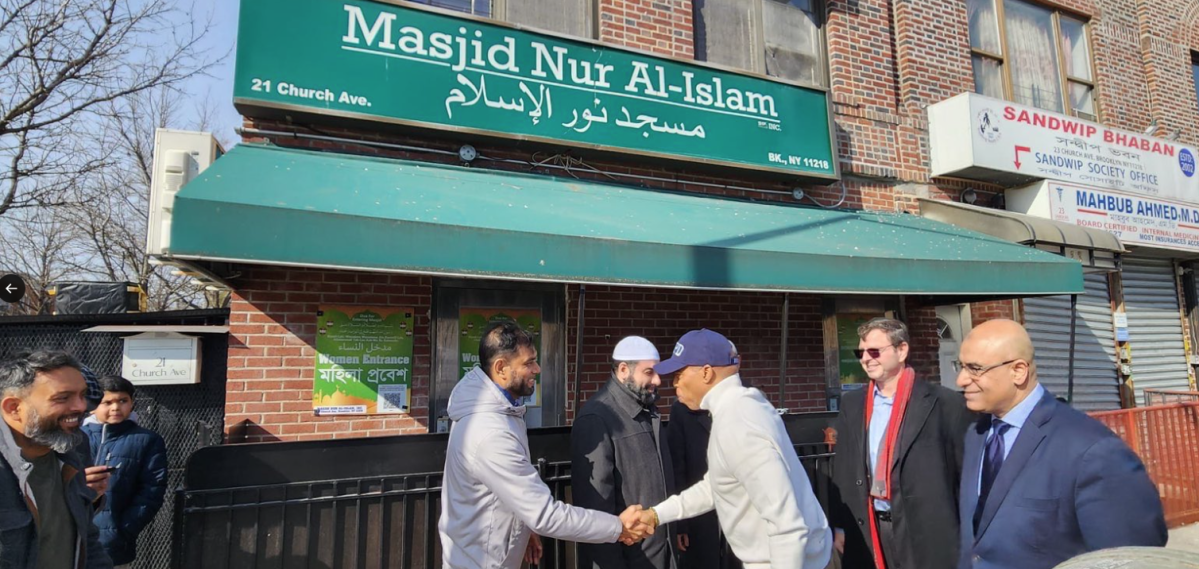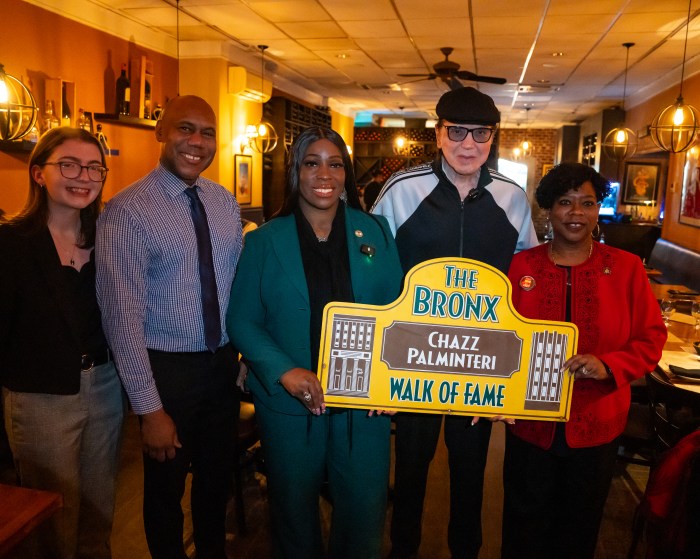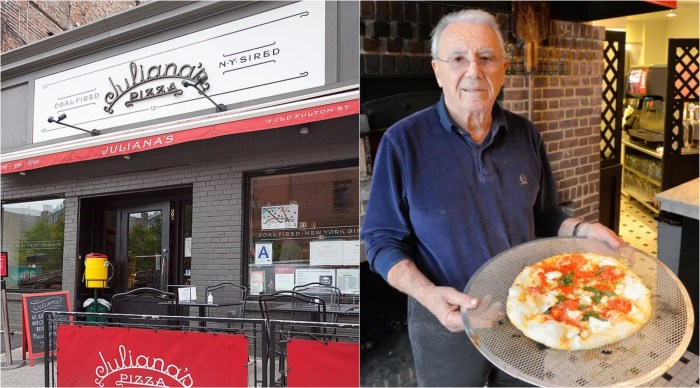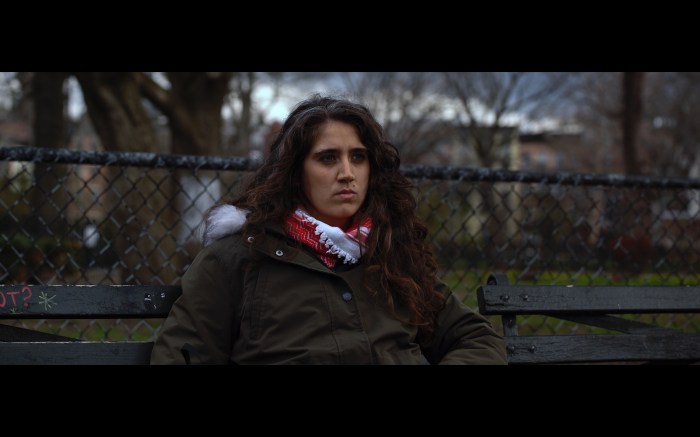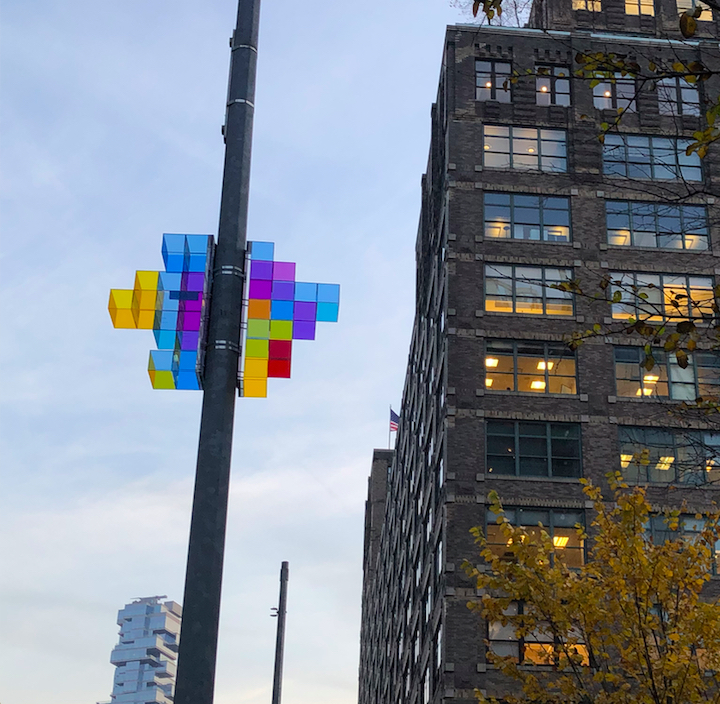
BY GABE HERMAN | A new art installation went up last month in Hudson Square that features geometric, translucent 3-D sculptures mounted on light poles on Varick Street.
Five pieces make up the installation, which is called “Street Cathedral” and interacts with changing light to reflect colors and shapes onto the nearby streets. The art piece is from the Hudson Square Business Improvement District (BID) and will be up until next October.
“Hudson Square BID is proud to bring ‘Street Cathedral’ to our neighborhood,” said Ellen Baer, CEO and president of the BID. “Created to evoke the same magic quality of stained glass, these dynamic sculptures provide pedestrians with a new lens through which to view their daily landscape.”
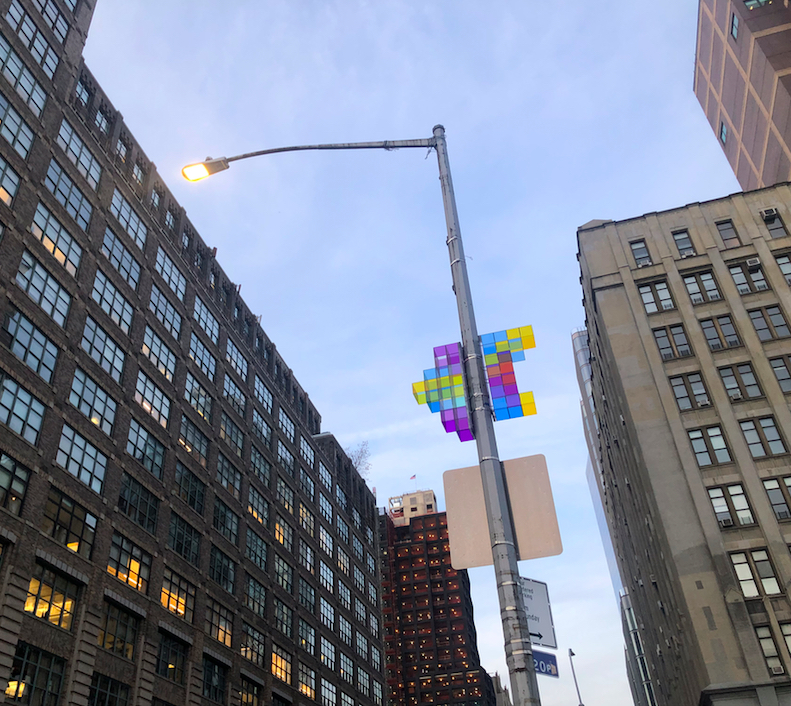
The artists, Claudia Ravaschiere and Michael Moss, told the Villager by email that the art was designed with the neighborhood in mind.
“First and foremost our work is inspired by the neighborhood and site that we are making the art for,” the artists said. “It is our hope that the art will create a reappraisal of everyday urban structures: the things that we pass as we walk through neighborhoods, bringing a surprising element into the urban scape.
“Street Cathedral utilizes daylight and the urban structures of streetlights to impart color and shape into the neighborhood street life. They are constructed three dimensionally, and intended to expand the field of vision. A kaleidoscope of colors invites the viewer to interact with light as the daylight shifts and changes throughout the day.”
The five locations of the light poles along Varick Street are: between Canal and Grand, Watts-Broome, Broome-Dominick, Dominick-Spring, and Downing-Carmine.
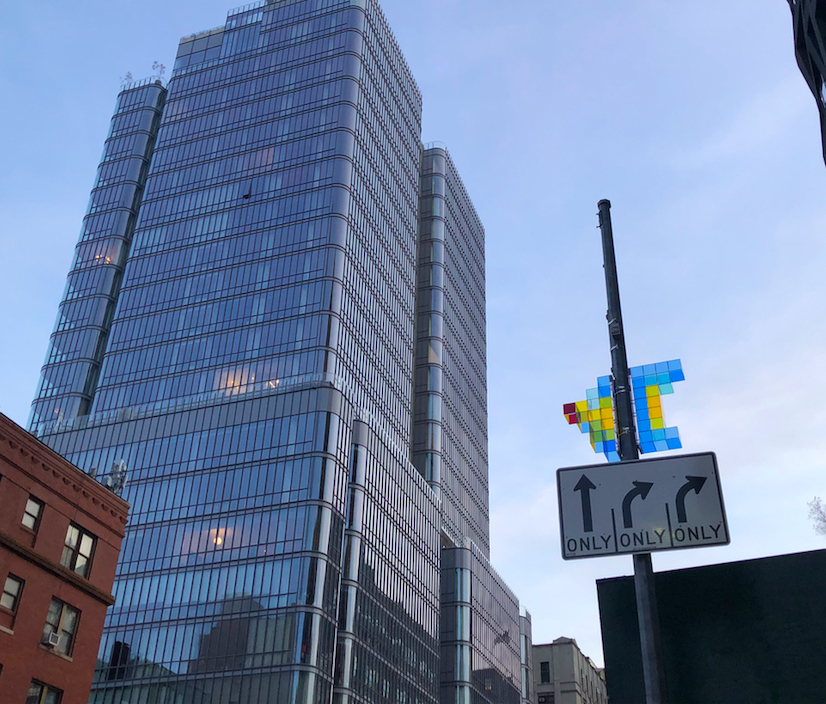
Ravaschiere and Moss said there is value to making public art.
“The aspect that we love most about doing art for public spaces is that it takes art onto the streets where everyone can experience it,” they said, “and hopefully bring a shared encounter and joy as people meet the art in unexpected places.
“We believe that art in the public realm enables viewers to re-imagine the spaces that they see every day,” the artists added. “It can break up our loneliness, connect us to our surroundings and show us another perspective of our environment.”
